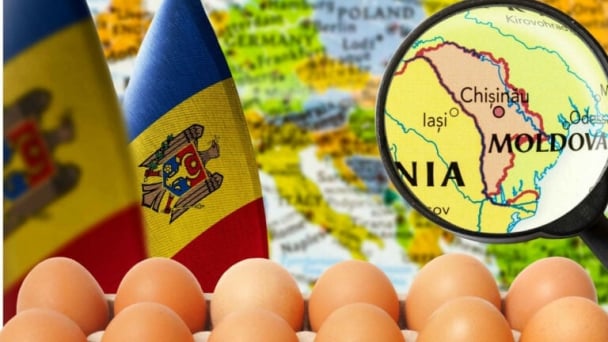September 13, 2025 | 02:32 GMT +7
September 13, 2025 | 02:32 GMT +7
Hotline: 0913.378.918
September 13, 2025 | 02:32 GMT +7
Hotline: 0913.378.918

Durian is one of Vietnam's key agricultural product export. Photo: Son Trang.
The Seminar on "Improving the export value chain of agricultural products and effectively linking with the Logistics system" was recently organized in Ho Chi Minh City. According to Ms. Le Thi Thanh Thao, National Representative of the United Nations Industrial Development Organization (UNIDO), Vietnam is facing pressure from various factors including the increasingly fierce regional and international competition, climate change and the volatile world political stage. As a result, it is imperative that Vietnamese businesses focus on promoting the export of agricultural products. These products will require stricter management and control of quality compared to other common consumer goods. More importantly, export businesses must be more closely connected with the logistics system, which needs to be recognized as both a bridge and a tool for promoting the export of Vietnamese agricultural products.
As a major fruit exporter in Long An province and the current biggest fresh dragon fruit exporter with over 7,000 tons of dragon fruit exported to China in 2023, Hoang Phat Fruit Co., Ltd. fully supports the development of a logistics system for exporting agricultural products.
According to Ms. Nguyen Nam Phuong Thao, Sales Director of Hoang Phat Fruit, logistics plays an indispensable role in forming a high value chain in the agricultural product industry. The current logistics system for Vietnamese agricultural products features multiple advantages such as the growing connection of supply chains between logistics service businesses and import-export businesses, reduced freight rates compared to before the Covid-19 pandemic, a readily available system of warehouses and empty containers to support transportation around the world.
However, Ms. Phuong Thao highlighted several limitations in the logistics system in Vietnam including high port costs and surcharges; higher air transportation costs compared to other countries in the region; a lack of an airline with a dedicated cargo fleet for agricultural products. Additionally, the transportation and processing time at the port is relatively lengthy.
As a result, Ms. Nguyen Nam Phuong Thao suggested that there should be a closer connection between export businesses and logistics businesses. Furthermore, Vietnam needs to promote research, improvement and application of new technologies. Namely, it should promote management utilizing 4.0 technology to improve quality, ensure stability in transportation, reduce logistics costs, and improve business efficiency for stakeholders in the supply chain.

Dragon fruits grown in Chau Thanh, Long An. Photo: Son Trang.
According to Mr. Nguyen Dinh Tung, Vice Chairman of the Vietnam Fruit and Vegetable Association (Vinafruit), it is necessary to invest in a comprehensive infrastructure system for agricultural product logistics. Subsequently, the system will link and connect major shipping lines domestically as well as globally in order to stabilize freight rates. Additionally, the logistics system will strengthen linkages between stakeholders in the agricultural supply chain including farmers, traders, processing plants, trading businesses and logistics businesses.
According to Mr. Tran Thanh Hai, Deputy Director of the Department of Import-Export under the Ministry of Industry and Trade, it is important to focus on promoting a deep integration of logistics services with agricultural production, industry, import and export activities, domestic goods circulation, and other service industries in order to further enhance the value chain of agricultural products for export and support effective linking with the Logistics system in the future. Moreover, he suggested Vietnam support the development of outsourcing logistics services in the export of agricultural products.
According to Mr. Hai, the current trend of globalization and international integration has brought on an urgent need to meet international standards such as ISO, HACCP, BRC, GlobalGAP, etc. as well as meet the increasingly strict technical barriers of various important export markets around the world. These needs will act as a key driving force that promotes a close connection between the logistics system and the export of agricultural products. Subsequently, stakeholders can improve their efficiency in various stages of the agricultural production process, inclduing harvesting, transportation, and post-harvest preservation. Additionally, these activities will greatly contribute to increasing competitiveness, expanding regional and international markets towards improving the value chain for Vietnamese agricultural product export.
Hai Phong City has all the necessary ingredients to develop its logistics service sector and establish itself as the logistics hub of the Northern region with all 5 modes of transport: sea, river, railway, road, air and a comprehensive port system.
In recent years, the development of Hai Phong city's logistics service activities has been recognized as a crucial factor. Moreover, they have made significant progress in terms of quantity, quality, and attracting and mobilizing both domestic and foreign investment.
Translated by Nguyen Hai Long

(VAN) The prolonged absence of Chinese buying is expected to weigh further on benchmark Chicago soybean futures , already hovering near five-year lows.

(VAN) Vietnam's rice sector is moving beyond its reputation for fragrant, specialty varieties such as ST24, ST25, and DT8. Focusing on health-oriented, emission-reducing rice, the sector is now positioning itself for sustainable growth.
/2025/09/11/0302-2-155633_317.jpg)
(VAN) Vietnam's rice sector has undergone a major transformation from mass production of medium- and low-grade rice to high-grade, fragrant varieties. This shift has helped Vietnamese rice secure a stronger position in the global market.

(VAN) From a nation struggling with rice shortages, Vietnam has risen to become one of the world's leading rice exporters. Today, Vietnamese rice is a globally recognized brand with distinctive varieties.

(VAN) A wide range of Vietnamese agricultural products has expanded its reach in international markets, but to maintain its position, Vietnam needs a well-structured national branding strategy.
/2025/09/09/0151-3-115633_157.jpg)
(VAN) This shipment of ASF vaccine is expected to arrive in the Philippines today (September 9) and will be received by local enterprises along with livestock and veterinary authorities.

(VAN) During the first half of 2025, Moldova exported nearly 11 million eggs to the European Union. This compares to only 9,000 eggs during the same period in 2024, as estimated by the government.